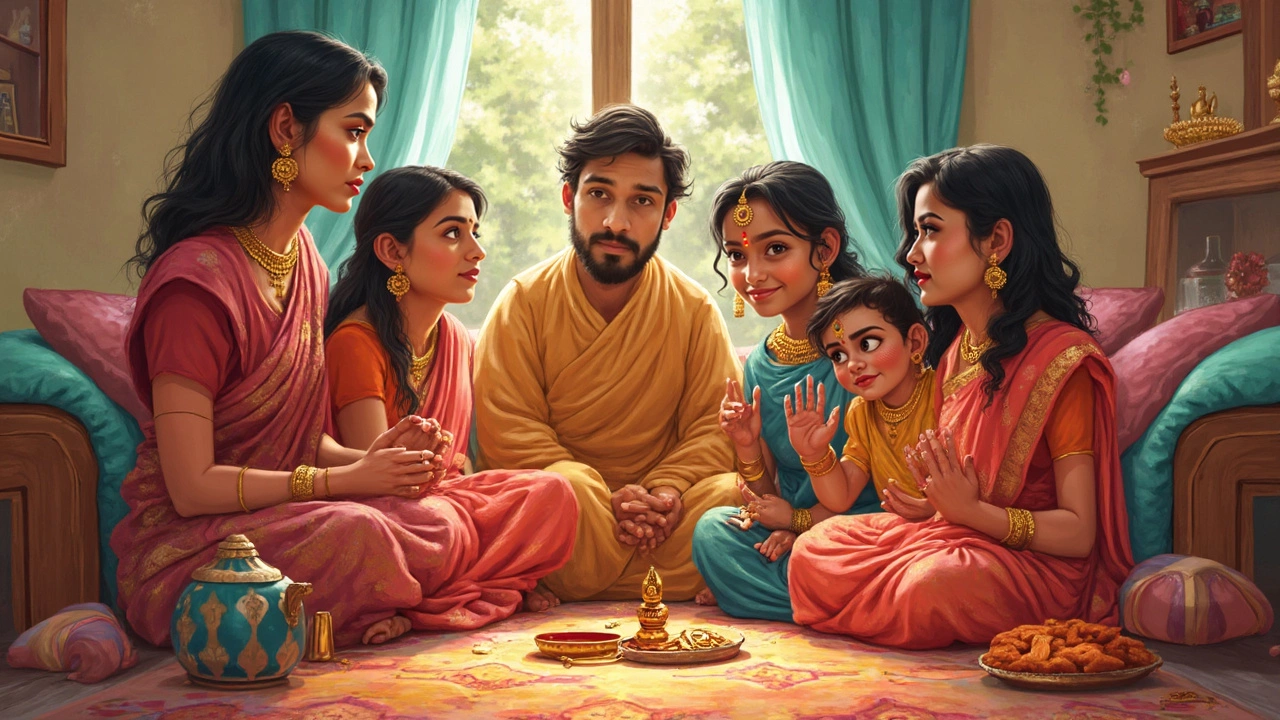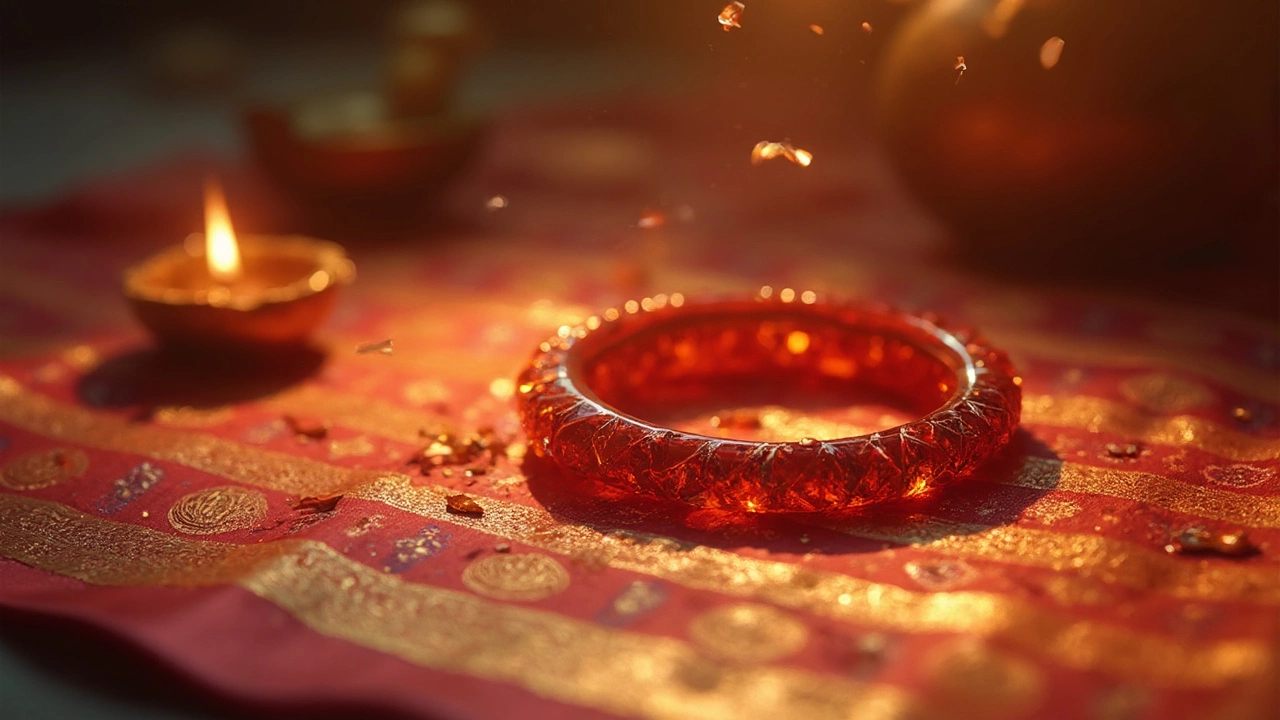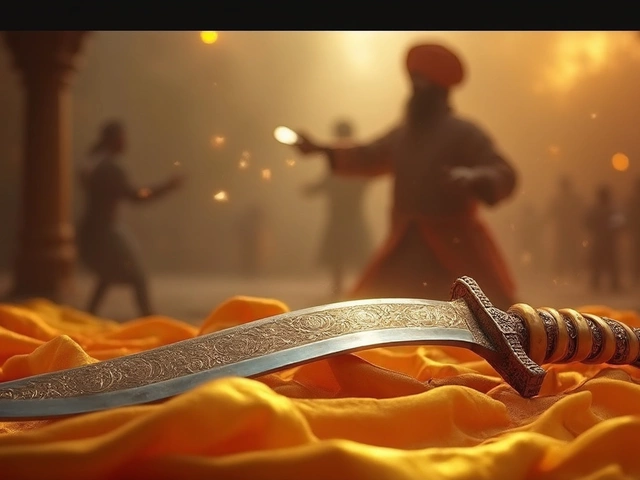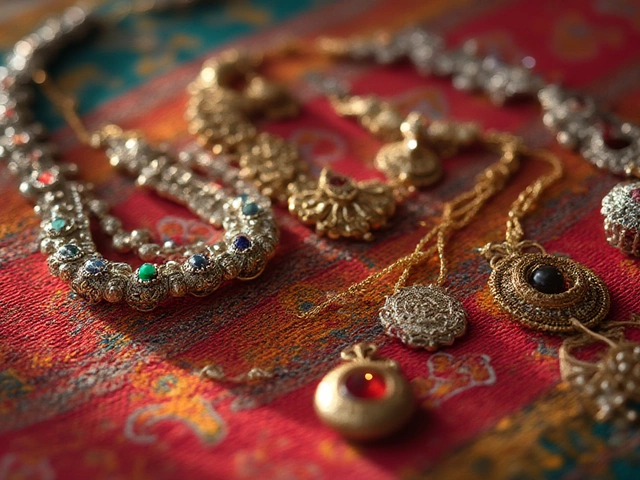Bangles have a special place in Hindu traditions, symbolizing prosperity, health, and good luck. It's interesting how something as simple as a circle of glass or metal can carry such weight. But what happens when one of these bangles accidentally breaks? It might seem like a small mishap, but within Hindu families, it can stir a mix of emotions and beliefs.
Some folks might view a broken bangle as a sign or an omen. Traditional beliefs often shape this perception, causing a mix of worry and curiosity. For others, it might simply be an accident—something that happens occasionally, just like any small everyday mishap. Yet, the reactions can vary widely from household to household. Some may quickly brush it off, while others might delve into the deeper meanings or link it to upcoming events.
Understanding these reactions means understanding the blend of cultural and emotional ties that many associate with bangles. Want to know more? Let's explore these nuances together, diving into how people interpret and handle a broken bangle in today's diverse cultural landscape.
- The Encoded Traditions of Bangles
- Symbolism Behind a Broken Bangle
- Family Reactions and Beliefs
- Superstitions: Myth or Reality?
- Handling a Break with Respect
- Modern Perspectives on Age-Old Traditions
The Encoded Traditions of Bangles
Bangles in India aren't just fashion accessories; they're steeped in cultural significance, especially within Hindu traditions. These beautiful, often vibrant circles symbolize more than what meets the eye.
Traditionally, women wear bangles as a sign of their marital status. In many parts of India, a bride's arms are adorned with a variety of bangles—often made from materials like glass, gold, or lac—each playing its part in cultural narratives. For instance, green glass bangles are popular in Maharashtra, symbolizing fertility and prosperity.
Even the colors hold weight. Red signifies energy and prosperity, while yellow is linked to happiness. In South India, married women wear a special kind of bangle made of gold and glass, known as 'kada,' which is believed to bring long life to their husbands.
Beyond marital status, bangles are thought to be good for health. There is a belief that the friction and constant tinkling of bangles on a woman's wrist increase blood circulation. Plus, they create soothing sounds, which some say ward off negative energies.
Let's take a quick look at how these beliefs vary regionally:
| Region | Common Bangle Type | Significance |
|---|---|---|
| North India | Red Lac | Marriage and commitment |
| West India | Green Glass | Fertility and prosperity |
| South India | Gold and Glass | Health and longevity |
It's fascinating how such small objects can weave such a large cultural tapestry. So, every time you see a set of bangles, there's a big story behind them waiting to be told.
Symbolism Behind a Broken Bangle
In Hindu culture, broken bangles go beyond just being a piece of shattered jewelry. They're wrapped up in stories, traditions, and beliefs that can be quite intriguing. When a bangle breaks, some people might say it's a bad omen, while others see it as a sign of change or new beginnings.
Historically, bangles have been symbols of prosperity, marital bliss, and feminine energy. In many parts of India, the breaking of a bangle can spark thoughts about shifts in these positive aspects. It’s not uncommon for some to think, "Is something about to change?" or to wonder if there's something more cosmic at play.
"A broken bangle is sometimes viewed as a way for the universe to hint at transitions," says Dr. Meenakshi Iyer, an expert in Indian cultural studies from Delhi University. "It's fascinating how such beliefs are woven into everyday life, offering insights into one’s personal journey."
Even more specific meanings can be attached depending on the type of bangle. For instance:
- Glass Bangles: Known for their fragility, a broken glass bangle may be considered a wake-up call to be cautious in financial affairs or family matters.
- Metal Bangles: Often sturdier, so when they break, it might suggest a more significant change, urging one to pay closer attention to health or career challenges.
And hey, let's not forget the contrasting views. Some modern families might simply chalk it up to wear and tear, especially in bustling city life where practicality often overshadows superstition.
Whether you lean into the cultural meanings or dismiss them as old wives' tales, understanding the symbolism can offer a little peek into how traditions and beliefs shape the way we respond to life's tiny disruptions.
Family Reactions and Beliefs
When a bangle breaks in Hinduism, the family reactions can be quite varied, influenced strongly by traditions and individual beliefs. In many Hindu households, bangles are more than just accessories—they're seen as a reflection of the wearer's life's journey, directly tied to cultural rituals and the marital status of women.
In some families, the accidental breaking of a bangle might immediately trigger feelings of concern or unease. This stems from cultural stories and age-old superstitions that have colored these perceptions over generations. There are tales intertwined in Hindu folklore where a broken bangle might be considered an early warning or an indication of change.
On the flip side, there are families who view the breaking of a bangle simply as an everyday incident, devoid of any ominous meaning. They might see it as an opportunity to refresh their bangle collection or as a reminder of life's impermanence, much like how we replace old with new in several aspects of life.
In metropolitan areas, attitudes are noticeably shifting. Many urban families are steering away from traditional reactions, choosing instead to focus on practicality over superstition. It's not uncommon to see younger generations shrugging off the incident entirely.
However, one interesting observation is that discussions about broken bangles often lead to family stories being shared—stories of weddings, festivals, and childhood memories, thereby making the event a bonding moment, rather than one of distress.
Respecting the beliefs that come with it, here's how you might handle a broken bangle:
- Calmly gather the pieces and dispose of them respectfully, if they are broken beyond repair.
- Some might choose to place the broken bangle in a symbolic place or during a spiritual ritual, as a way to ‘let go’ of any negative energy.
- Use it as a catalyst to discuss cultural beliefs with children or other family members, keeping traditions alive through conversation.
A broken bangle in Hinduism can be a moment for reflection, surrounded by family beliefs, and sometimes—may just be an accident without the deep-seated meanings. It's the personal and familial interpretations that dictate what comes next.

Superstitions: Myth or Reality?
When a bangle snaps, especially in Hindu traditions, it often stirs up talk of superstitions. Are these beliefs real, or just myths passed down through generations? Let's break it down.
Some say a broken bangle in Hinduism signals bad luck or a warning from the universe. This idea has roots in deep cultural lore, where bangles symbolize positive vibes like health and happiness. So, when one breaks, it's easy to imagine it as a sign of something amiss.
But how true is this? Well, not everyone buys into these superstitions. Many believe it’s just a coincidence. After all, bangles break because they’re fragile. Here’s the thing—whether you're superstitious or not often comes down to how you were raised and what you’ve been taught to believe.
There's also a practical angle. Some experts on cultural studies point out that these beliefs may have developed to remind people to handle their precious things with care, especially since traditional bangles in India can be quite valuable.
Let’s not forget modern views, which treat these superstitions as cultural artifacts rather than literal truths. People now tend to focus on the bright side—like taking a broken bangle as an opportunity to buy a new set for a fresh look or for bringing in new energies.
So, whether you view a broken bangle as a myth or reality can be as much about cultural background as it is personal belief. At the end of the day, it’s about finding a blend of respecting traditions while staying grounded in today’s practical world.
Handling a Break with Respect
Dealing with a broken bangle in a respectful way can help you address both cultural beliefs and personal sentiments. It's not just about fixing or discarding it—it's about understanding the importance tied to broken bangle in Hinduism. Here’s how you can address this with sensitivity and respect:
1. Assess the Sentiment: First, acknowledge how the broken bangle makes you feel or how it impacts your family. For some, it might trigger a sentimental reaction, connecting to memories or beliefs held dearly through generations.
- Talk to your family about any particular customs they might follow related to broken bangles.
- Share thoughts openly to understand a collective feeling towards the incident.
2. Dispose with Care: If you decide to part with the broken piece, doing so respectfully is important. In some communities, it’s customary to bury or immerse the shards in water, treating them like any sacred item.
- Consider wrapping the pieces in a cloth before disposing, a simple yet thoughtful act.
- Some opt to immerse the broken bangle pieces in a river, aligning it with other rituals conducted for sacred items.
3. Recycle and Reuse: In today’s world, sustainability is key. You can recycle broken tradition bangles India by creating something new, like quirky art pieces or even garden décor.
- Turn broken bangles into coasters or photo frames. It’s a fun way to breathe new life into them.
- Create colorful wind chimes using the pieces, adding a touch of tradition to your modern home.
4. Seek Blessings: Sometimes, after a bangle breaks, people find peace by seeking blessings or conducting a small prayer. Involving a family elder in this helps imbue the act with guidance and reassurance.
- You could organize a simple puja at home, focusing on gratitude and positivity.
- Invite family members to share anecdotes or stories about the significance of bangles, enhancing collective understanding.
By giving thoughtful attention to handling a broken bangle, you honor both the cultural roots and create personal meaning. This not only respects the traditional value but also adapts to modern sensibilities, bridging the gap between the old and the new in a very personal way.
Modern Perspectives on Age-Old Traditions
Nowadays, the meaning behind a broken bangle can spark different thoughts, especially among the younger generation. People are questioning old beliefs and finding a balance between respecting traditions and adopting a more modern outlook. As lifestyles change, so do attitudes toward cultural norms, and bangles are no exception.
For many young folks, a broken bangle in Hinduism is viewed as nothing more than an accident. Instead of worrying about potential bad omens, some see it as a chance to embrace change and start anew. The idea is to not get bogged down by unnecessary superstitions, but rather find personal significance in these everyday incidents.
Social media and technology have played a huge role in shifting perspectives. Platforms have become spaces for sharing personal stories and diverse interpretations, providing a window into how others perceive age-old traditions like wearing bangles. The explosion of information and viewpoints encourages a more inclusive understanding of cultural practices, easing away from strict literal interpretations.
Yet, even with these changing perspectives, there's a desire to keep a connection with roots. While some might not read too much into a broken bangle, they still value it as a symbol of heritage and identity. This modern view doesn’t dismiss tradition entirely but rather adapts it to fit today's way of life.
In short, as with many traditions, what a broken bangle means is ultimately a personal decision. While our grandmothers might have panicked over the mishap, today more people are choosing to decide its meaning for themselves, finding peace in a mix of old and new values. It's a fine example of how cultural traditions evolve yet remain significant in everyday life.



